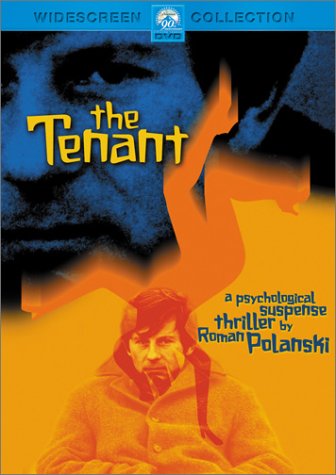
Although overshadowed by director Roman Polanski’s more famous horror efforts, REPULSION and ROSEMARY’S BABY, the more obscure THE TENANT is actually their equal and in many ways their superior — a haunting, mesmerizing tale of a man’s loss of identity and descent into madness.
Polanski himself stars as Trelkovsky, a Polish immigrant looking for an apartment in Paris. A potential vacancy occurs when a woman named Simone Choule leaps from her apartment window — an apparent suicide attempt. Visiting the hospital to see when horribly injured Choule will finally expire (technically, the apartment still belongs to her until she dies), Trelkovsky meets Choule’s friend Stella (Isabelle Adjani). Wrapped in bandages like a mummy, Choule seems to recognize Trelkovsky, and lets out a scream of horror before dying. Trelkvosky moves into the empty apartment and starts an affair with Stella, but his weird neighbors soon drive him to distraction. He suspects they may have driven Choule to suicide, and he suspects they are doing the same to him. Gradually, he begins to take on Choule’s personality traits: at first, they’re simple things like inadvertently taking Choule’s favorite seat in a cafe; later, they extend to buying wigs and cross-dressing. Eventually, the loss of his own identity and his fusion with Choule leads him to recreate her suicide attempt. Awakening in the hospital, he finds himself wrapped in bandages like a mummy and opens his eyes to see two visitors: Stella and…himself — exactly as when he visited Choule in the hospital. Trelkovsky opens his mouth and screams…
THE TENANT is short on typical horror movie action: there are no monsters, and there is little in the way of traditional suspense. That’s because the film is not operating on the kind of fear that most horror films exploit: fear of death. Instead, THE TENANT’s focus is on an equally disturbing fear: loss of identity. Like Carole Ledoux (Catherine Deneuve) in REPULSION, Trelkovsky is a person alone in an apartment slowly going mad. The difference is that Carole seems to suffer from some vague but overpowering form of paranoia that makes her afraid to go outside, while Trelkovsky is slowly losing his own personality. Both think someone is out to get them, but Carole turns her deathwish outward, murdering a man in an insane fit, while Trelkovsky ultimately turns his own dark fears upon himself by attempting suicide.
Like REPULSION, the pacing of THE TENANT lacks urgency, because it is about a slow descent into madness that works toward what, in retrospect, seems like an inevitable conclusion. And yet, the film maintains a curious, hypnotic hold upon the viewer. Again like REPULSION, THE TENANT tries to bridge the gap between audience and character, using bizarre, surreal flourishes to put the viewer into the mind of the madman, such as a bouncing “ball” outside Trelkovsky’s window – that turns out to be a head. One particularly evocative and disturbing (if seemingly inexplicable) visual moment occurs when Trelkovsky looks through his apartment window (which gives him a good view of a window to the building’s communal restroom across the courtyard) and sees a nightmarish vision of someone in bandages — as Simon Choule was, in the hospital — slowly unwrapping them to reveal herself.
Fortunately, these hallucinatory interludes are more than gratuitous visual flourishes; they are more like sign posts marking the major turning points on the road to dementia. The nightmarish vision of Choule’s unwrapping herself evokes traditional horror imagery (the bandages suggest the Mummy, and the revelation of a hidden, possibly disfigured face is an iconic element of the genre at least since 1925 THE PHANTOM OF THE OPERA), but the scene’s overwhelming power stems from its apparent irrationality – it seems to make no sense, and we feel as if we too are losing our grip on reality, along with Trelkovsky. And yet, the image actually has a point not that hard to divine, designating the moment at which the Choule personality, formerly only teasing at the edge of awareness, emerges full-blown into Trelkovsky consciousness, like a re-awakening phantom – or, more accurately, like a guilty conscience that refuses to stay under wraps.
Equally unsettling is Polanski’s bizarre monologue, in which he recalls a newspaper account of a man who lost his arm in an accident and was refused permission to performa a burial service for the severed apendage. He seems disturbed by the concept limbs like arms and legs are no longer considered an intrinsic part of a person after they have been disconnected from the brain: “What right does my head have to call itself me? What right?”
Polanski’s horror film is not a shocker — you won’t find yourself leaping out of your seat as a monster or masked killer lurches into frame — but it is genuinely frightening on a deeper level, living on in your mind like a bad nightmare that refuses to be forgotten. THE TENANT creates its own strange Kafka-esque landscape, where inexplicable events breed and give birth to ominous portents lurking in the shadows of the mind. The fact that it’s someone else’s dream offers little comfort as the lights come up and you leave the theatre…
TRIVIA
Director Roman Polanski stars as the film’s protagonist, Trelkovsky, but his name does not appear among the actors’ names on screen — a rare case of an actor going without credit for playing the lead role in a film. At the time of the film’s release, Polanski explained that it would look too egotistical to take credit for his performance, because his name was already on the credits as writer and director.
THE TENANT is the third installment of a loose trilogy that includes REPULSION and ROSEMARY’S BABY. All three films deal with characters living in apartments who gradually succumb to paranoia, believing themselves to be victims of persecution. In the case of ROSEMARY’S BABY, Rosemary’s paranoia turns out to be justified (although whether her baby truly is the Son of Satan is an open question). Polanski’s later historical drama THE PIANO PLAYER takes a similar approach, although in that case the persecution is so clearly genuine that the word “paranoia” no longer applies.
THE TENANT (Le Loctaire, 1976). Directed by Roman Polanski. Screenplay by Polanski & Gerard Brach, based on the novel by Roland Topor. Cast: Roman Polanski (uncredited), Isabelle Adjani, Melvyn Douglas, Jo Van Fleet, Bernard Fresson, Michel Blanc, Shelley Winters.
Copyright 2005 Steve Biodrowski
[serialposts]
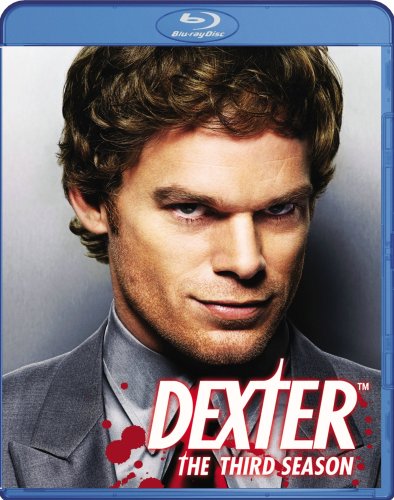




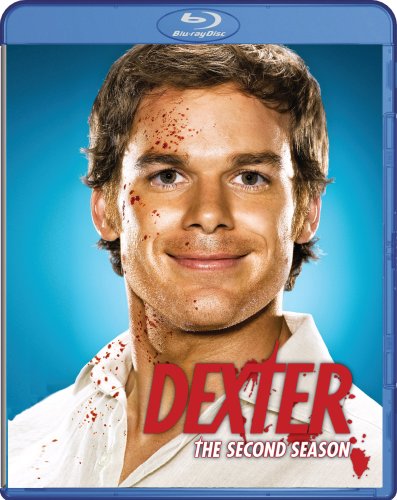
 Do not buy a ticket to this movie. Do not rent this movie. Do not watch this movie for free. If you have a choice between seeing this movie and being incarcerated in Guantanamo, choose the latter, because sitting through this suckfest is such torture that it qualifies as a crime against humanity that should be punishable under the Geneva Conventions.
Do not buy a ticket to this movie. Do not rent this movie. Do not watch this movie for free. If you have a choice between seeing this movie and being incarcerated in Guantanamo, choose the latter, because sitting through this suckfest is such torture that it qualifies as a crime against humanity that should be punishable under the Geneva Conventions.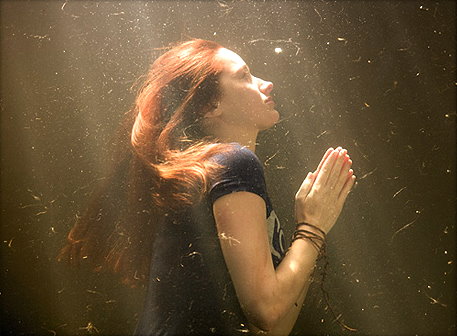
 Thanks to the enduring popularity and critical respect afforded to Alfred Hitchcock’s PSYCHO (1960), the character of Norman Bates has emerged as one of the premier icons of the horror genre. Norman is memorable because he appears, at first, to be shy and sympathetic – a lonely boy-man under his mother’s thumb. Even when he turns out to be a murderer, we still feel sorry for him, because he is the victim of a mental illness (split personality) that he cannot control; in fact, the murderous portion of his personality is so distinct that he seems almost to be possessed by the spirit of his dead mother – leaving the “normal” part of his Norman self untainted.
Thanks to the enduring popularity and critical respect afforded to Alfred Hitchcock’s PSYCHO (1960), the character of Norman Bates has emerged as one of the premier icons of the horror genre. Norman is memorable because he appears, at first, to be shy and sympathetic – a lonely boy-man under his mother’s thumb. Even when he turns out to be a murderer, we still feel sorry for him, because he is the victim of a mental illness (split personality) that he cannot control; in fact, the murderous portion of his personality is so distinct that he seems almost to be possessed by the spirit of his dead mother – leaving the “normal” part of his Norman self untainted.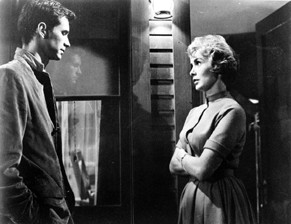 As for the alleged camp, Perkins said, “I don’t think you can look at either of [those] two sequels […] and point to and correctly identify any elbows in the ribs or any camp humor in them.” As for any black humor, Perkins insisted that it had existed all the way back in the original. He recalled that, during the initial release of PSYCHO, audiences “laughed so hard that Hitchcock was so dismayed and wanted to take the film back and remix some of the dialogue scenes so that they would be heard. […] they laughed almost throughout the picture. Hitchcock claimed that it was the first time that an audience had gotten the jump on him – the first time he hadn’t been able to read his audience. Finally, he gave into it and used to call PSYCHO a comedy. Whether or not he originally thought of it as a comedy, I don’t’ now. But I was with him in Chicago and New York when it opened, and you could hear the words [because] they laughed so hard.”
As for the alleged camp, Perkins said, “I don’t think you can look at either of [those] two sequels […] and point to and correctly identify any elbows in the ribs or any camp humor in them.” As for any black humor, Perkins insisted that it had existed all the way back in the original. He recalled that, during the initial release of PSYCHO, audiences “laughed so hard that Hitchcock was so dismayed and wanted to take the film back and remix some of the dialogue scenes so that they would be heard. […] they laughed almost throughout the picture. Hitchcock claimed that it was the first time that an audience had gotten the jump on him – the first time he hadn’t been able to read his audience. Finally, he gave into it and used to call PSYCHO a comedy. Whether or not he originally thought of it as a comedy, I don’t’ now. But I was with him in Chicago and New York when it opened, and you could hear the words [because] they laughed so hard.” The man who adapted Robert Block’s novel discusses his contribution to Alfred Hitchcock’s classic film.
The man who adapted Robert Block’s novel discusses his contribution to Alfred Hitchcock’s classic film.
